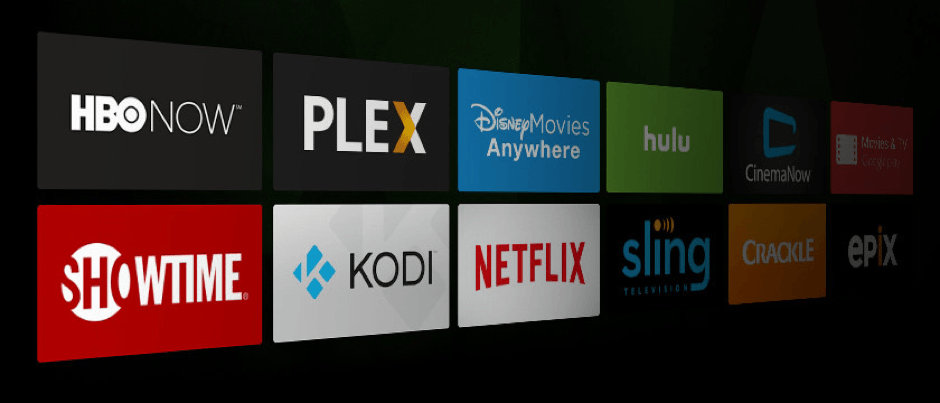
Everybody knows Netflix and Stan. Fewer know about Foxtel Play, BigPond Movies, TEN Play, ABC iview and SBS On Demand. In the US, Netflix still rules, with a 40% market share, and it’s the market leader here too. But competitors are coming. Monthly app downloads of HBO Now, Amazon Video, Hulu and Showtime in the US together surpassed those of Netflix earlier this year, and have continued to grow. There is also Sling, owned by an AT&T competitor (more on this in a moment) as well as Xfinity tv, the Netflix look-alike, with a slew of others coming.
Streaming video over the internet is no longer a technological outlier, which it was when Netflix started just 20 years ago. The great deals that Netflix did on year-old content translated into a big business, before the seven content studios that control Hollywood had really worked it out.
But work it out they have, and they will be streaming soon to a tv set near you (including in Australia) in the very near future. And it won’t just be the traditional players – tech giants Apple, Google and Amazon are also well advanced in the planned global roll-out. Of course, they are not just settling for the old shows of the content majors, having flagged intentions to get into the content creation game to feed their audiences.
So Netflix’s business problems are not structural or even disruptive; it is facing simple competitive pressures as content makers of all types learn how to price their content streams on-line, which was once difficult but isn’t any more. In its defence, Netflix is not standing by idly (though some days its shareholders seem to be).
These developments help us to understand the real reason for AT&T’s US$85b bid for Time Warner. It’s not that streaming is the only part of the deal, but it is certainly a major part.
It’s all to do with the content/distribution argument, which has been around ever since I started working in the media/disruption area. Going back 20 years, content was king. But in recent years, as distribution has consolidated there has been a shift in the power structure, with content having less strength against the merged distribution giants, so being forced to take the deals offered or be locked out. Foxtel grew up in this world, as did the US cable companies and free-to-air tv.
But now streaming is changing that, with consumers having many distribution paths, such as the internet where Netflix lives, to consume content. In this context, content is becoming relatively more important once again.
Meanwhile, ATT’s position as an oligopoly telephony distributor has been under pressure as new capacity in cable, fibre and satellite has curtailed its pricing power in bundled voice and data. To counter this, AT&T (and indeed others, including our own Telstra) expanded into mobile, and also content, with Telstra buying into Foxtel, or, in the US Comcast buying NBC Universal.
But the whole strategy started running into trouble with over-the-top telephony services like Skype and Viber, which turn mobile dollars into wi-fi pennies. And viewers also switched out of highly-priced, legacy technology pay tv services (like Foxtel and ATT’s DirecTV) and into streaming services like Netflix and Sling.
AT&T can’t expand further in distribution (because regulators wouldn’t allow it). So content it is. But content may not be such a bad idea.
And no, it’s not because AT&T would keep Warner content to itself. From both a regulatory and financial perspective the deal wouldn’t fly if AT&T attempted to limit the Warner output to its own wires, towers and birds (satellites). It wouldn’t make sense to anyway – the Warner business model depends on Game of Thrones being offered as widely as possible to maximise revenue streams.
But an expansion of offerings, in the form of more streaming carrying more Warner product may be what AT&T is banking on. It’s the same principle as having Coke available in as many shops as possible. More distribution means more sales.
The new streaming services already operate in much the same way that Netflix does, choosing from the existing content libraries of all the studios, with selected original content from whichever one they are tied to. In the case of HBO, its Warner. Streaming services are proliferating as content companies get set to attack Netflix, and it may be that having the quality Warner content like Thrones or Westworld is a make-or-break for any given service. Which is why AT&T sees value in the company.
There has even been some talk of the telco’s in Australia buying tv stations to mimic the US deal, but this is a fundamental misunderstanding of local content assets. In the US, Warner and its HBO are production giants, with programming which can be sold again and again across multiple distribution channels, include pay tv, streaming, etc. No-one is going to stream a previous series of The Bachelor or an NRL season or the news, which is what free-to-air tv has become. The phone companies could package up content (as Bigpond TV does) but it’s really a me-too service, and so struggles.
Foxtel is sometimes considered to be a pay tv company in the mould of Comcast or Cox cable, but it isn’t – the company mostly only aggregates third party content and distributes it on the wires of others, whether Telstra or the NBN.
As for Netflix, it seems to me that its glory days are over. Cord cutting took five years to really bite, but bite it did. Companies rarely thrive when they are operating an old model during a time of significant structural change.
Share this Post

